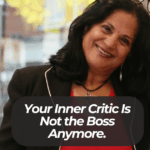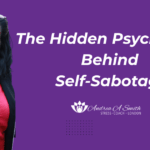I’ll be honest with you. In the last few weeks, I have woken up exhausted and in survival mode 24 -7, rushed through the day, and collapsed into bed at night, only to do it again the next morning.
At some point, that routine felt normal. But what if “normal” is actually survival mode?
What if many of us are alive… but not really living?
What Is Survival Mode?
Survival mode isn’t failure. It’s efficiency.
Your brain is designed to protect you. It flips into autopilot to conserve energy, which is why you can drive home and not remember half the journey. Autopilot isn’t the enemy; it’s a feature.
But here’s the problem: survival mode was built for short bursts of stress, not for an entire life.
And the longer you stay there, the more it costs:
-
Burnout levels are at record highs.
-
Anxiety and depression rates continue to rise worldwide.
-
And perhaps the most painful cost: you stop hearing your own voice. You stop choosing.
From Just Existing to Truly Living
Take Sarah, a project manager I spoke with recently. On paper, she was doing “well.” She had a stable job, a decent salary, and a busy schedule.
But her reality looked different: she woke up tired, skipped breakfast, pushed through endless emails, and collapsed on the couch each night.
Her words:
“I felt like a machine. The work got done, but I didn’t feel alive.”
When Sarah discovered the concept of survival mode, she felt relief. It wasn’t weakness; it was her brain on autopilot, trying to protect her.
She started with one small change: a micro-restoration ritual. Every lunch break, she walked outside for 10 minutes without her phone.
-
Within two weeks, she noticed she was calmer and less irritable in meetings.
-
After one month, she felt strong enough to say “no” to a project that drained her energy.
Her reflection:
“It wasn’t one big transformation. But each small choice gave me back my voice. I was finally living, not just existing.”
The Hidden Costs and Hidden Advantages of Survival Mode
Survival mode isn’t all bad. In fact, it protects you from dangerous over-optimisation and the endless hustle culture where people push themselves to “thrive” every second.
Sometimes, safety really does beat forced thriving.
But here’s the paradox:
-
Survival mode sharpens focus, grit, and discipline.
-
Yet it also dulls creativity, joy, and connection.
Stress itself isn’t poison. It’s actually training. The real problem is when stress becomes your permanent state.
In fact, studies show that people who reframe stress as growth become more resilient and healthier in the long term.
So the question isn’t: “How do I kill survival mode?” The real question is: “When do I choose to step out of it?”
Signal Mode: The Antidote to Survival Mode
The opposite of survival mode is what I call Signal Mode.
That’s when you reconnect with yourself. You’re present. You’re making choices from clarity, not fear.
Signal Mode looks like:
-
Saying “no” without guilt.
-
Listening when your body whispers for rest.
-
Making decisions from awareness, not autopilot.
Try this now:
-
Pause.
-
Inhale for four seconds. Exhale for eight seconds.
-
Notice your shoulders, chest, and jaw.
Where’s the tension? What’s one thing you’ve been ignoring?
That’s your signal. That’s you breaking the static.
5 Practical Shifts to Step Out of Survival Mode
You don’t need a dramatic life overhaul to escape survival mode. Start small.
1. Awareness Audit
Journal: Where am I surviving? Where am I thriving?
(Adding a gratitude journal helps you reframe your perspective.)
2. Micro-Restoration Rituals
Take a 30-second deep breath. Stretch between tasks. Step outside for five minutes.
Tiny resets remind your body: You’re safe.
3. Boundaries as Energy Filters
Every false “yes” is a “no” to yourself.
Start practising the art of saying no without overexplaining.
4. Reconnecting With Joy
Ask: What tiny thing sparks joy today?
It could be a song, a walk, or laughing with a friend. Then protect it.
5. Future Self Alignment
Ask: If I wasn’t afraid, what would I choose differently?
Then take one step toward that answer.
👉 Try just one of these tonight. One shift creates momentum.
Returning to Your True Self
You don’t escape survival mode overnight. You step out of it little by little.
Each pause. Each breath. Each intentional choice.
That’s you coming back to yourself.
Survival mode isn’t the enemy; it proves your body is efficient, strong, and adaptive.
But staying there too long costs you your joy, creativity, and signal.
Your signal is waiting.
The only question is: are you ready to hear it?
✨ If this resonated with you, share it with someone who might feel stuck in survival mode.
If you’d like more tools and reflections like this, join my masterclass. Together, we’re building a community for surviving and truly living.






